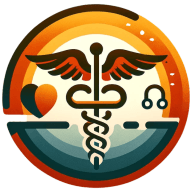How Can You Address Burnout in Healthcare?
Burnout is a critical issue plaguing healthcare professionals today. To shed light on effective strategies, a Plastic Surgeon & Medical Director and an MD, Physician share their insights. The first approach emphasizes the importance of prioritizing open conversations about well-being, while the final tip focuses on fostering ongoing learning and collaboration. This article compiles a total of six expert insights designed to help combat burnout within healthcare teams.
- Prioritize Open Conversations About Well-Being
- Leverage Technology to Reduce Administrative Tasks
- Implement Wellness and Resilience Training
- Introduce Mindful Mondays for Stress Relief
- Focus on Continuous Education and Flexibility
- Foster Ongoing Learning and Collaboration
Prioritize Open Conversations About Well-Being
I prioritize open conversations about workload and mental well-being. We have monthly check-ins—not just about performance, but about how people are feeling. Creating a culture where it's safe to talk about stress helps us catch early signs of burnout. Pairing that with regular reset time sends the message that rest isn't a luxury; it's a necessity for all of us.

Leverage Technology to Reduce Administrative Tasks
In tackling burnout among healthcare professionals at Riveraxe LLC, I prioritize leveraging technology to alleviate repetitive tasks that contribute to fatigue. For instance, we integrated automated data-entry systems in clinics, which cut the administrative workload by 30%. This allows staff to dedicate more time to direct patient care, which is more fulfilling and reduces burnout.
Additionally, fostering strong leadership is crucial. We empower leaders to actively communicate with their teams and address concerns promptly, like during EHR implementations. Such leadership not only guides transitions smoothly but also builds a supportive culture that prioritizes staff well-being, mitigating feelings of burnout.
We also emphasize the importance of continuous professional development. By investing in ongoing training and skill-building opportunities, we help our teams feel more competent and engaged in their roles. This not only boosts morale but also minimizes the stress and burnout associated with feeling unprepared or overwhelmed by new technologies.
Implement Wellness and Resilience Training
One impactful approach we've implemented to prevent burnout within our team is the introduction of regular wellness and resilience-training sessions. A study published in the Journal of the American Journal of Medicine found that burnout doubled the risk of adverse patient-safety incidents and led to poorer overall quality of care and decreased patient satisfaction. To reduce these risks, we prioritize our staff's mental well-being by providing resources and training focused on stress-management techniques, emotional intelligence, and work-life balance.
In addition to wellness training, we've established a peer-support program that encourages team members to share their experiences and offer mutual support. This initiative not only builds camaraderie but also creates a safe space for open dialogue about mental-health challenges. As a result, we've observed a marked improvement in team morale and engagement, leading to better patient interactions and care outcomes. By actively addressing burnout, we ensure our healthcare professionals are not only physically present but also emotionally and mentally equipped to provide the best possible care.

Introduce Mindful Mondays for Stress Relief
To tackle burnout within my team, we introduced Mindful Mondays. Each Monday morning, we dedicate the first hour of the workday to mindfulness activities, including meditation and quiet reflection. I noticed how stressful Monday mornings can be for everyone, often setting a hectic tone for the week ahead. Starting off with some intentional time for ourselves not only helps clear our minds but also fosters a sense of connection among team members.
The feedback has been overwhelmingly positive, with many team members expressing how these sessions help them recharge. It's been wonderful to see how taking this time together has sparked conversations about mental health, creating a supportive environment. Some have even mentioned how they've started incorporating mindfulness into their daily routines outside of work. In the end, adding mindfulness to our weekly routine has lowered stress and improved our team's connection.

Focus on Continuous Education and Flexibility
In my practice, tackling burnout starts with a focus on continuous education and personal growth. I ensure that every member of the team has access to the latest dental innovations and professional development opportunities. This not only keeps us at the cutting edge but also empowers the team with a sense of purpose and accomplishment.
Furthermore, I have implemented flexible scheduling to allow for better work-life balance. For instance, staggered shifts or remote work for administrative tasks have reduced the intensity of long working hours, helping my team maintain energy and enthusiasm.
I also prioritize creating an inclusive and supportive work culture. Regular team-building activities and open communication channels are crucial. At Advanced Smiles Marion, leveraging feedback from my staff has played a significant role in reducing stress, ensuring everyone feels heard and valued.

Foster Ongoing Learning and Collaboration
One approach I have taken to address burnout within my team at The Alignment Studio is fostering a culture of ongoing learning and collaboration while also ensuring we prioritize our own well-being. With over 30 years of experience, I've seen firsthand how burnout can affect healthcare professionals, particularly in high-demand environments like sports physiotherapy or multidisciplinary clinics. I encourage my team to engage in regular professional development and cross-discipline collaboration, allowing them to expand their skill sets and share knowledge. This not only keeps things fresh and stimulating but also alleviates the isolation that can occur in clinical settings. I've also instituted regular check-ins not just to discuss patient care but to ensure my team feels supported in managing their workload. This has helped create a more balanced environment where we can provide high-quality care without sacrificing our own health.
A key example of this approach came during the early days of the pandemic when stress levels were particularly high. Many of our practitioners were struggling with uncertainty and a heavier mental load. Drawing on my background and leadership experience, I implemented flexible work arrangements and introduced a resilience-building workshop where we shared strategies to manage stress and avoid burnout. This, coupled with regular virtual team meetings, helped maintain a sense of community and connection. As a result, not only did we reduce burnout, but we also strengthened our team cohesion, ensuring everyone felt valued and supported during a challenging time. This holistic approach to staff well-being has been instrumental in maintaining a healthy, motivated team.



